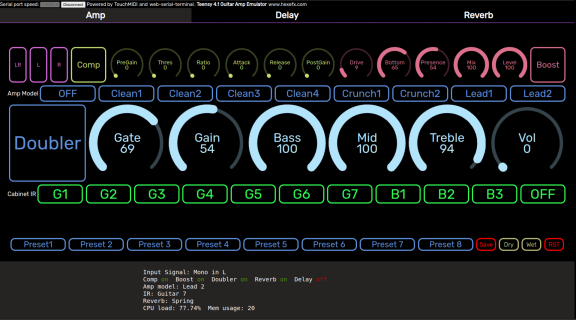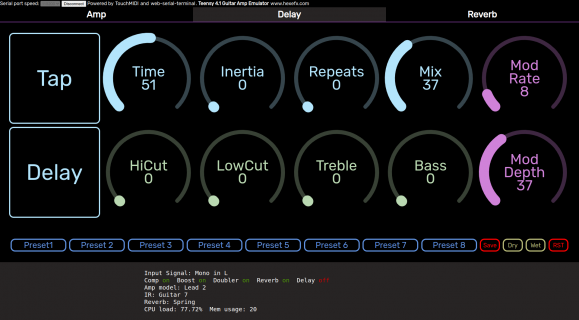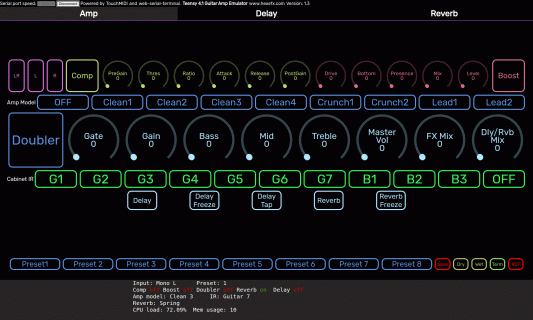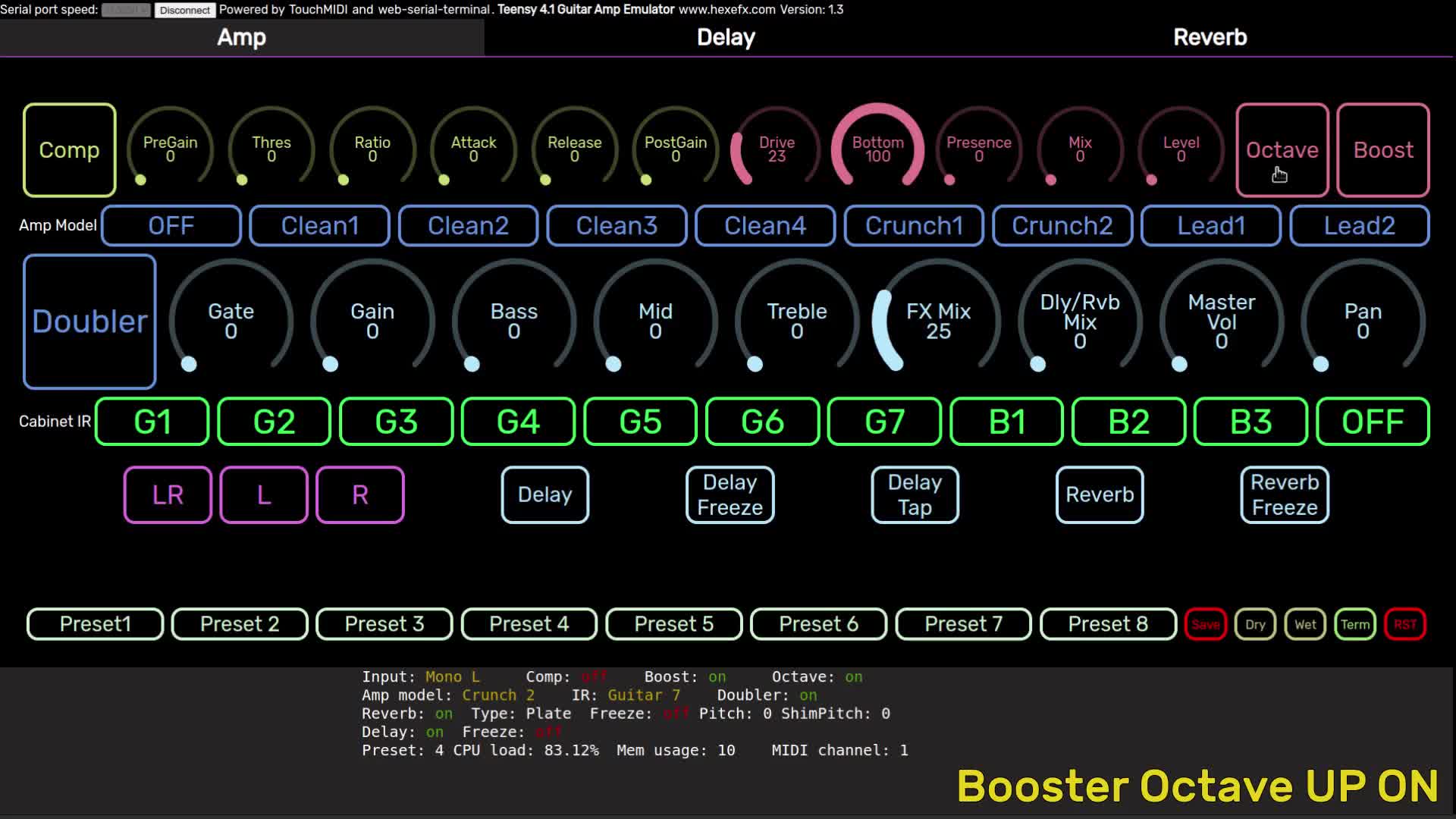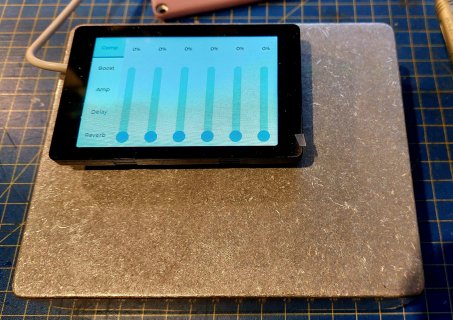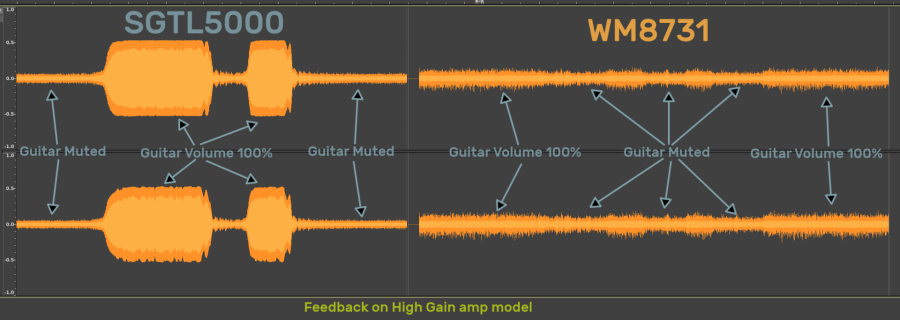Been playing around a bit more. I got the high/lowpass filter and peaking filters working. I cant for the life of me figure out how to map the controls from "0-100" to what they actually are. I think it might be in the bundle.js file, but thats over my head. I also cant get the codec input/output levels to map correctly, so thats just a place holder for now.
Im still getting a lot of internal feedback at higher gains, especially on the two lead amps.
I also haven't installed the buffer, because it would be really cool to get this to work without it - the price of entry would just be the Teensy, audio shield and two jacks.
Since installing your newer version with delay, I havent had any issues with the info at the bottom of the screen appearing.

Im still getting a lot of internal feedback at higher gains, especially on the two lead amps.
I also haven't installed the buffer, because it would be really cool to get this to work without it - the price of entry would just be the Teensy, audio shield and two jacks.
Since installing your newer version with delay, I havent had any issues with the info at the bottom of the screen appearing.


